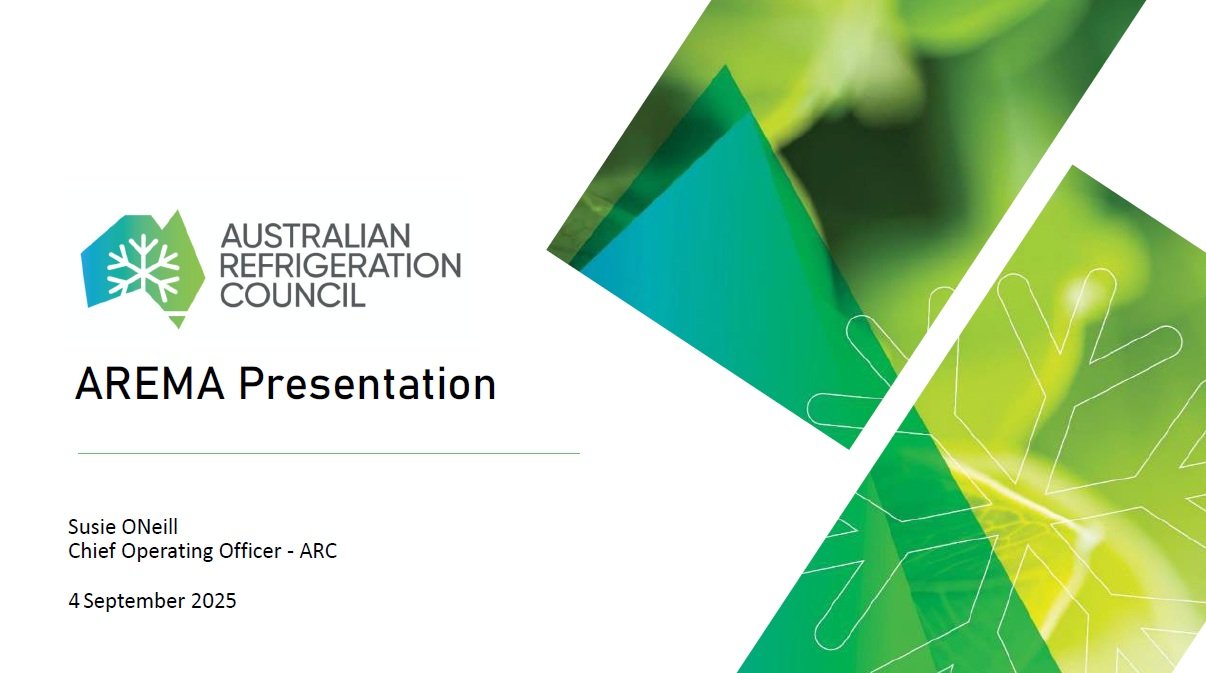In a presentation to AREMA in September 2025, the Australian Refrigeration Council (ARC) shared a comprehensive overview of Australia’s refrigeration and air conditioning (RAC) industry, highlighting its economic scale, environmental impact, and energy consumption.
According to ARC, the industry contributes AUD 18.9 billion [approx. USD 12.1 billion] in energy spending and AUD 12.7 billion [approx. USD 8.1 billion] in new equipment annually. Approximately 1 in 117 registered businesses in Australia holds a Refrigerant Trading Authorisation (RTA), and the sector supports 378,000 jobs—equivalent to 2.6% of the national workforce.
The combined stock of RAC equipment grew from approximately 54 million units in 2016 to 62 million in 2022. The number of refrigerated vehicles also rose significantly, from around 38,000 to 59,000 over the same period.
ARC reported that total RAC-related emissions are around 58.5 million tonnes CO₂-equivalent (Mt CO₂-e), comprising 6.9 Mt CO₂-e from direct refrigerant leakage and 51.6 Mt CO₂-e from energy use. When including end-of-life emissions (4.9 Mt CO₂-e), the industry’s total contribution reaches approximately 63.4 Mt CO₂-e—representing 12.6% of Australia's overall emissions.
Electricity consumption by the RAC sector was estimated at 66,700 GWh, or 24.4% of the country’s total electricity production. Stationary air conditioning and heat pumps account for 56% of this usage, followed by the cold chain sector (30%), domestic refrigeration (13%), and mobile air conditioning (0.3%).
The national refrigerant bank is estimated at 55,000 tonnes, with a global warming potential of around 100 million tonnes CO₂-e. It is composed primarily of hydrofluorocarbons (HFCs, 95%), with smaller shares of hydrochlorofluorocarbons (HCFCs, 3.7%) and growing use of natural refrigerants such as hydrocarbons, CO₂, and ammonia. Stationary AC and heat pumps contribute 65% of the refrigerant bank, followed by mobile AC (20%), cold chain (13%), and domestic refrigeration (2%).
Read More
